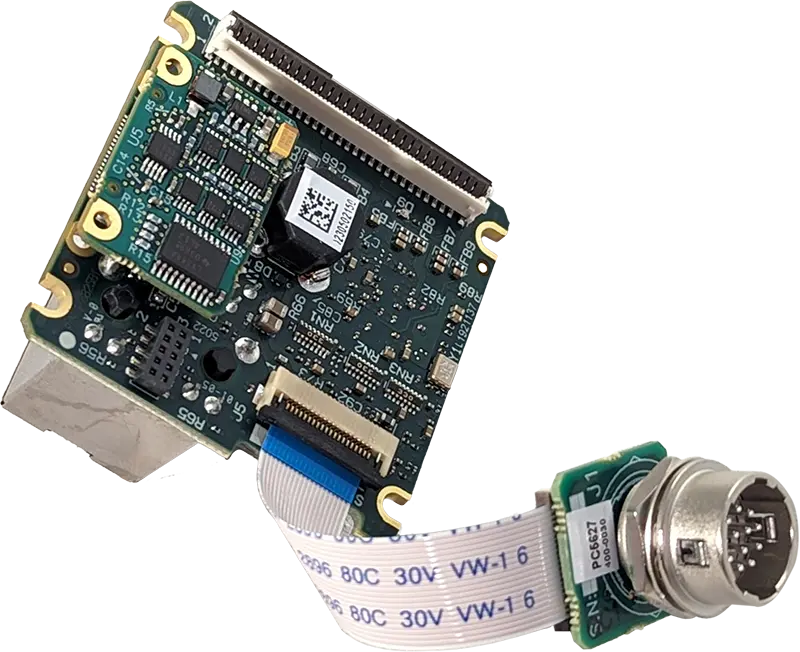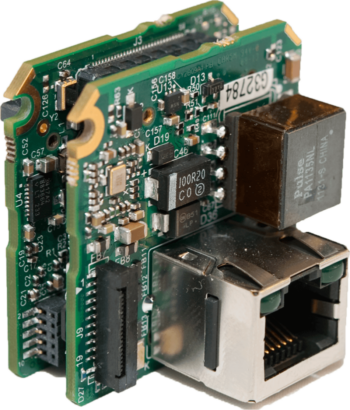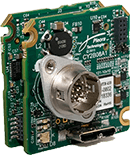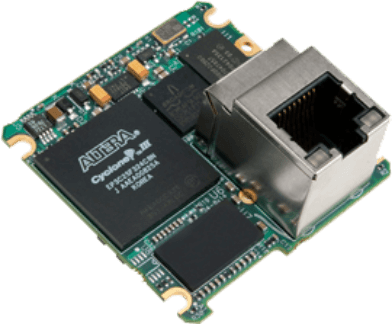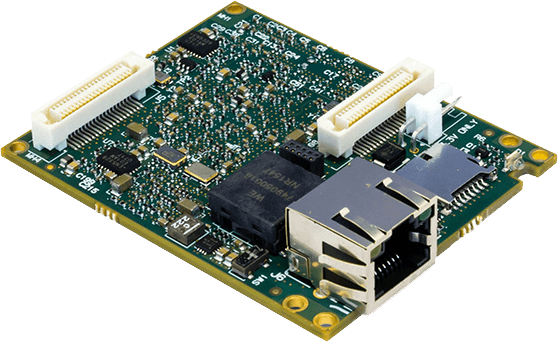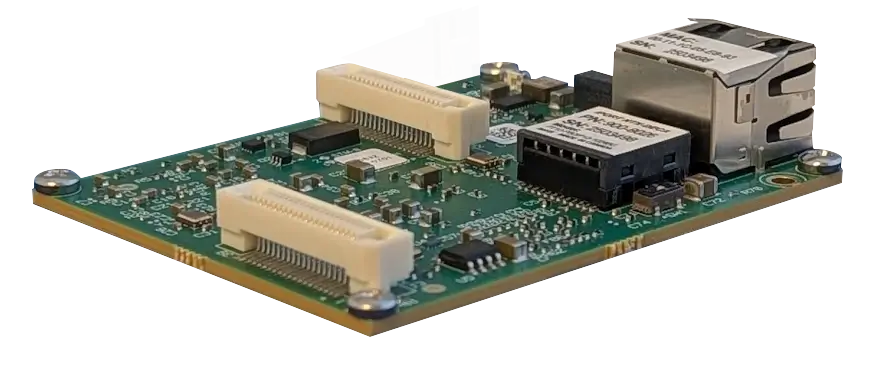Fast, Straightforward Design of GigE and USB3 Vision Cameras
Pleora’s embedded solutions allows manufacturers to easily design, prototype, and launch new GigE and USB3 Vision cameras to address opportunities more quickly, minimize risk, and reduce costs.
The sensor interface hardware features a standardized, parallel LVTTL/LVCMOS interface, including image, line, and pixel framing signals. With this standardized interface, manufacturers can rapidly create a family of cameras, differing only by the interface, choosing from GigE Vision over Gigabit Ethernet, NBASE-T, or 10 GigE, or USB3 Vision over a USB 3.0 connection.
GenICam compliance hardware and included development tools make it fast and easy for manufacturers to generate the GenICam XML file required for compliant cameras. The tools allow manufacturers to link features in the XML file to camera head or sensor-specific commands internal to the camera head.
For higher bandwidth throughout over existing Ethernet infrastructure, Pleora’s patented RapidPIX lossless compression converts video data into GigE Vision compliant packets that are transmitted at up to 1.5 Gbps throughput rates over existing 1 Gbps infrastructure. The compression technique, integrated into Pleora’s iPORT NTx-Mini-LC platform, is optimized for machine vision to ensures original and post-compression data are identical while supporting ultra-low latency performance for mission-critical applications.
Pleora’s eBUS Edge transmitting solution offers an alternative software only approach, simplifying the deployment of advanced embedded platforms, sensors and cameras for improved machine vision inspection applications by allowing developers to create a GigE Vision 2.1 and GenICam compliant device with no additional hardware.
Pleora’s sensor interface hardware is supported by Pleora’s feature-rich eBUS™ SDK application tool kit. With this software suite, designers can rapidly prototype and deploy production-ready software to support video transmission over GigE, 10 GigE, and USB 3.0 using the same application programming interface (API).
Unique Advantages
- Off-the-shelf solution allows fast design, prototype, and market launch
- Easily create a family of cameras, differing only by the interface
- Compact solutions for small form factor imaging devices

Edge Processing Whitepaper
Download Whitepaper
